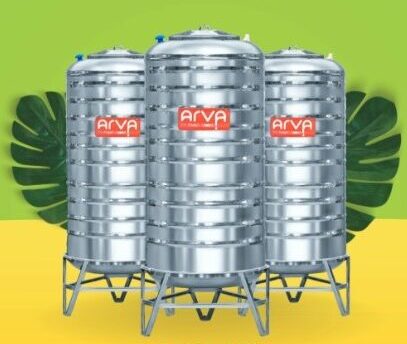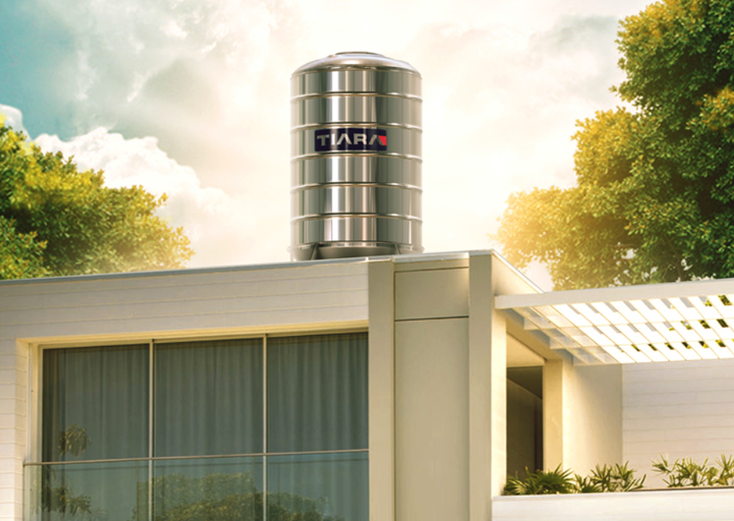
Introduction:
Water storage plays a pivotal role in ensuring a consistent and safe water supply. However, the material of storage tanks profoundly influences water quality. In this case study, we delve into how a community revitalized its water quality by transitioning to stainless steel tanks. Through meticulous data analysis, heartfelt customer testimonials, and tangible outcomes, we illustrate the efficacy of this transformation. Stainless steel’s inert nature ensures that water remains untainted by harmful substances, addressing concerns about rust and contamination.
Backround:
Before the transition, the community grappled with water quality issues stemming from corrosion and contamination associated with their previous tank material. Residents endured unpleasant tastes, odours, and discoloration in their water, raising concerns about its safety for consumption.

Transition To Stainless Steel Tanks:
Recognizing the necessity for a lasting solution, the community opted to invest in stainless steel tanks for their water storage needs. Stainless steel was selected for its durability, corrosion resistance, and inert properties, promising to mitigate contamination risks and uphold water quality standards. Moreover, the weldability of stainless steel allows for seamless construction, minimizing the risk of leaks and ensuring structural integrity. By prioritizing stainless steel tanks, communities prioritize the importance of clean and safe water storage, ultimately enhancing public health and environmental sustainability.
Data Analysis:
Following the adoption of stainless steel tanks, exhaustive water quality assessments were conducted to gauge the impact of the switch. The findings revealed significant enhancements across various parameters:
Taste and Odour: Residents reported a discernible improvement in the taste and odour of their water, characterizing it as fresher and cleaner.
Colour: Discoloration concerns were virtually eradicated, resulting in pristine, aesthetically pleasing water.
Microbial Contamination: Bacterial counts exhibited a notable decrease, signaling a reduction in microbial contamination and an augmentation of safety measures.
Chemical Composition: Dissolved solids and metals remained within acceptable thresholds, underscoring stainless steel’s inert nature and ability to preserve water purity.

Customer Testimonials:
Communal feedback further validated the success of the transition. Residents expressed gratification with the elevated water quality, highlighting its transformative impact:
1. Confidence in the safety and reliability of the water supply surge.
2. Appreciation was extended for the absence of unpleasant tastes, odors, and discoloration.
3. Recognition of the long-term benefits and cost-effectiveness of stainless steel tanks was widespread.
Practical Outcomes:
The adoption of stainless steel tanks yielded pragmatic benefits:
Longevity: Stainless steel tanks boast a lifespan spanning decades, presenting a sustainable solution for water storage needs.
Minimal Maintenance: Stainless steel’s inert properties obviate the need for frequent cleaning and maintenance, economizing time and resources.
Environmental Advantages: Stainless steel’s recyclability aligns with sustainability objectives, mitigating environmental impact and reducing ecological footprint.

Conclusion:
This case study exemplifies how transitioning to stainless steel tanks can engender substantial improvements in water quality. Rigorous data analysis, heartfelt testimonials, and tangible outcomes underscore the efficacy of this transition in fortifying safety, reliability, and sustainability. As communities prioritize water quality, stainless steel emerges as an indispensable solution, ensuring clean and safe water for present and future generations.
Moreover, the community reaped economic benefits, saving on operational costs and sidestepping expenses associated with frequent maintenance and repairs of traditional tanks. This financial prudence further underscored the long-term value of investing in stainless steel tanks. In essence, this case study serves as a testament to the transformative potential of stainless steel tanks in elevating water quality and sustainability. By investing in resilient and dependable infrastructure, communities can safeguard their water resources and enhance the well-being of their populace for generations to come.


